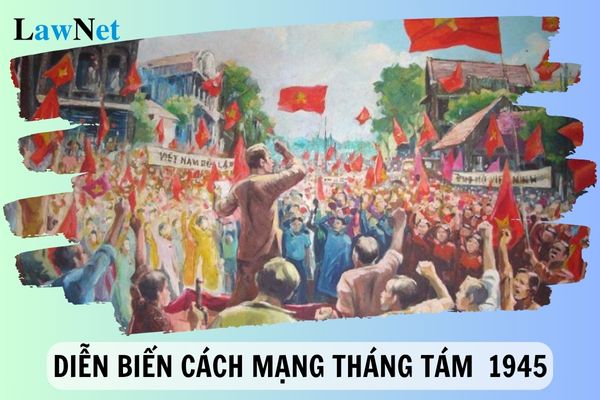What are historical context and developments of the August Revolution in 1945 in Vietnam? What are general guidelines on teaching methods for grade 12 History subject in Vietnam?
What are historical context and developments of the August Revolution in 1945 in Vietnam?
The August Revolution of 1945 stands as a radiant milestone in the history of the Vietnamese. The August Revolution opened a new era, an era of national liberation linked with class liberation, and an era of national independence associated with socialism.
Outlined below are the historical background and developments of the August Revolution of 1945:
| Outlined below are the historical background and developments of the August Revolution of 1945 I. Historical Background 1. International Context: - On May 9, 1945, Nazi Germany surrendered unconditionally, marking the end of the war in Europe. - The Allied forces launched a powerful attack against the Japanese forces. By August 14, 1945, the Japanese fascists surrendered unconditionally, ending World War II. - After the Japanese fascists surrendered, British and Chinese armies were to enter Indochina to disarm Japanese forces. 2. Domestic Situation: - Vietnam was under the domination of the French colonialists and later the Japanese fascists. - The Vietnamese people endured starvation, exploitation, and difficult living conditions. - On March 9, 1945, the Japanese fascists conducted a coup to oust the French. That very night, the expanded Central Executive Committee convened, deciding to launch a revolutionary movement as a prelude to a general uprising. - In March 1945, the Central Committee of the Vietnam Communist Party issued a Directive "The Japanese and French Shoot Each Other and Our Actions." II. Developments of the August Revolution - August 13-14: The Viet Minh national conference was held in Tan Trao, Tuyen Quang to discuss plans for the general uprising. Ho Chi Minh and other leaders decided to proceed with the uprising. - August 15: Japan surrendered to the Allies, creating a power vacuum in Vietnam. This was a golden opportunity for the Viet Minh to initiate the uprising. - August 16: The Viet Minh organized the National People's Congress at Tan Trao, passing the decision for a nationwide general uprising. Liberation forces advanced towards Hanoi. - August 19: The uprising successfully took control in Hanoi. Thousands of Hanoi citizens participated in demonstrations and occupied important Japanese and puppet government offices of Tran Trong Kim. - August 23: The uprising succeeded in Hue. The puppet government of Tran Trong Kim in Hue was overthrown, and Emperor Bao Dai abdicated. - August 25: The uprising succeeded in Saigon. The military and people of Saigon rose to seize power from the Japanese and the puppet government. - September 2, 1945: President Ho Chi Minh read the Declaration of Independence at Ba Dinh Square, officially establishing the Democratic Republic of Vietnam. |

What are historical context and developments of the August Revolution in 1945 in Vietnam? What are general guidelines on teaching methods for grade 12 History subject in Vietnam? (Image from Internet)
What are general guidelines on teaching methods for grade 12 History subject in Vietnam?
According to the Curriculum for General Education in History issued with Circular 32/2018/TT-BGDDT, the general guidelines on teaching methods for grade 12 History subject in Vietnam includes:
- The curriculum of History is developed with an orientation toward capacity development, thereby emphasizing active learning as the main teaching method.
- The active teaching method focuses on organizing activities that relate to real-life situations; linking intellectual activities with practice and experiential activities.
- Encouraging self-study and group work to develop key qualities, general capacities (self-control and self-study, communication and collaboration, problem-solving and creativity) and historical capacity for students, meeting the goals of the General Education Program.
What are the methods for forming and developing general capacities in the grade 12 History subject in Vietnam?
Based on the General Education History Curriculum issued with Circular 32/2018/TT-BGDDT, the methods for forming and developing general capacities in the grade 12 History subject in Vietnam are prescribed as follows:
- Self-control and self-study capacity: developed through learning activities such as gathering information from historical sources; expressing personal opinions about events, figures, historical processes; conducting surveys, practicing history at historical and cultural sites locally; applying historical knowledge to explain real-world issues; researching, exploring, and self-learning history.
- Communication and collaboration capacity: developed through group activities; experiential activities at sites, museums, historical and cultural relics; interviewing historical witnesses.
- Problem-solving and creativity capacity: developed through activities of identifying problems, hypothesizing, expressing personal opinions about historical events and figures; finding logic in problem-solving methods, evaluating solutions to historical problems; applying historical lessons learned in real-life situations.

